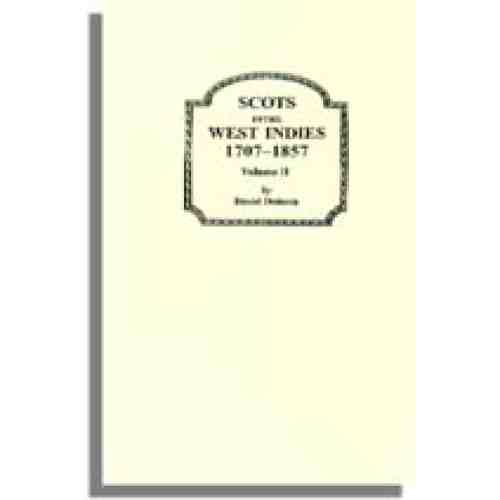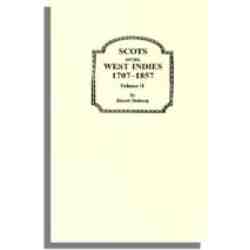Scotland has had direct social and economic links with the West Indies for nearly 400 years. Settlement started in 1626 when James Hay, the Earl of Carlisle, was appointed Proprietor of Barbados, an event which led to a number of Scots making their way to the island. (For a list of Scottish emigrants to Barbados, see Barbados and Scotland, Links 1627–1877, by David Dobson.) Later Scottish transportees, such as Cromwellian prisoners of war, Covenanters, and criminals, were supplemented by a small flow emigrants from Glasgow and Edinburgh. Some of the survivors of the ambitious Darien Scheme, whereby Scotland hoped to set up an independent trading post in Panama, arrived in Jamaica and the smaller islands. Scots could also be found in the Dutch Caribbean islands.
After the union of Scotland and England in 1707 and the lifting of restrictions on trade between these two countries, Scotland’s trade with the islands expanded and so did its stream of immigration throughout the West Indies. To a larger extent than elsewhere, the colonies of the West Indies attracted Scots with skills or money to invest. Scotsmen figured prominently in the Indies sugar cane, cotton, and tobacco-growing businesses, a phenomenon which promoted trade between the Indies and the mainland ports of Boston, New York, Philadelphia, Charleston, and Savannah. In due course, families moved between these various locations, and links were established. The Scottish population of the West Indies also increased when many Loyalists took refuge there following the American Revolution.
The work at hand is the second volume in this series. It is the outgrowth of Mr. Dobson’s researches in the archives and libraries of Scotland, England, and Denmark and, together with Volume I, it represents the first listing devoted to Scottish inhabitants of the West Indies for the aforementioned period. Arranged alphabetically by surname, many of the entries in this volume were culled from Scottish newspapers like the Glasgow Mercury and the Greenock Advertiser, in which notices would appear seeking to employ managers and servants. In all, the second volume identifies an additional 2,000 Scots not found in Volume I, who are identified by full name, island inhabited, date, and source of the information, and sometimes by occupation, parent(s) name(s), and education, and vessel upon which he/she arrived. Jamaica would appear to be the main port of disembarkation for the people described here; however, readers will also discover Scots who traveled to St. Vincent, Grenada, Dominica, Tobago, Trinidad, St. Lucia, Antigua, Cuba, St. Kitts, St. Croix, and other ports of call.



